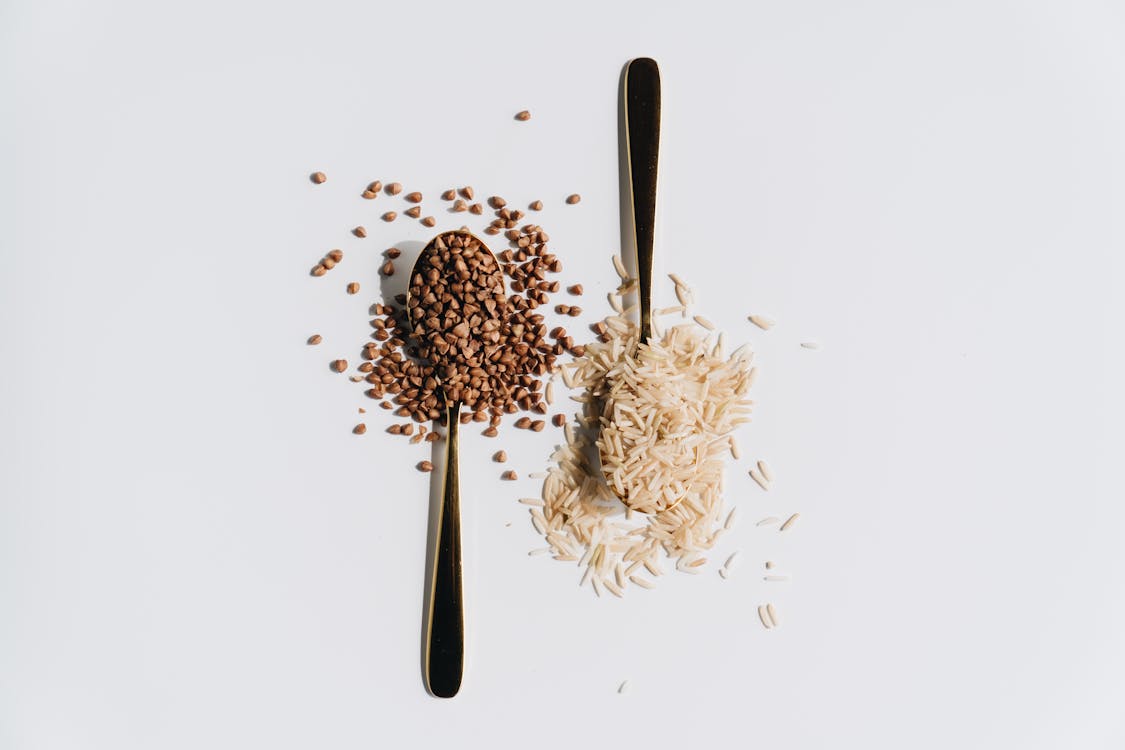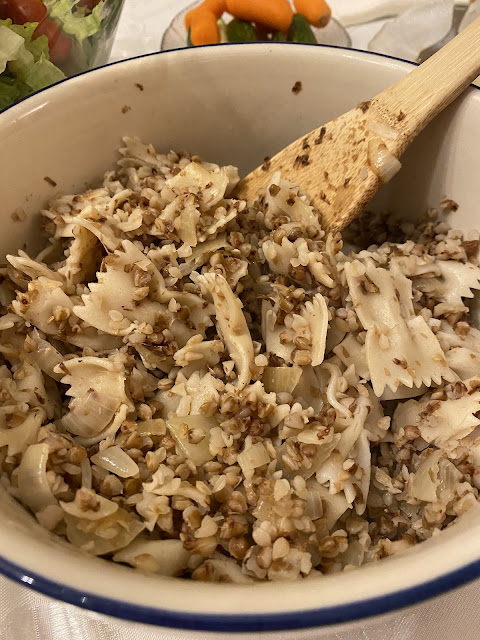I remember my mom making kasha when I was younger, but somewhere along the way, I have forgotten all about it in the last few years. This week however, as I prepared one of my grandmother’s family recipes for an upcoming Jewish holiday, the recipe called for kasha and I rediscovered it!
It was easy enough to find in my local supermarket.
I like the “coarse groats” as opposed to the “whole groats and ” It is a little lighter. I also like it cooked in a tasty vegetable broth, not water. It is a game changer for me. I’m inspired to start making this healthy side dish again. I was actually blown away by how delicious the kasha tasted!

Kasha is a ancient grain-like ingredient (it’s not really a grain) that has been a staple in various cultures for centuries, and today, it’s making a comeback, especially among those seeking additional gluten-free options.
The Origins of Kasha
Kasha has roots in Eastern Europe and Asia, with buckwheat (kasha) being cultivated for thousands of years. Despite its name, buckwheat is not related to wheat and is completely gluten-free. The term “kasha” specifically refers to the toasted groats of buckwheat, which have a rich, nutty flavor.
What is Kasha?
Kasha is made from whole buckwheat grains that have been roasted, giving them a distinctive flavor and aroma. The groats can be found in various forms, including whole groats, coarse groats, fine groats, crushed, or as flour. You may have heard of “buckwheat pancakes.” which are made from buckwheat flour. Its unique taste and texture make it a fantastic substitute for grains such as rice or quinoa, and it can serve as an excellent base for both savory and sweet dishes.

Why Kasha is Great for Gluten-Free Diets
As a pseudo cereal, kasha is actually a seed from the rhubarb plant and contains no gluten, making it safe for those with celiac disease or gluten sensitivity. Additionally, buckwheat is packed with nutrients, including protein, fiber, and essential amino acids, making it a healthy addition to any diet. It’s also high in antioxidants, particularly rutin, which may help support heart health.
How To Cook Kasha: Quick and Easy
Cooking kasha is quick and easy.
- Rinse: Rinse the kasha in a large fine mesh colander under cold water to remove any impurities. Drain well.
- Toast: For enhanced flavor, toast the wet kasha in a pre-heated dry skillet (with sides) for about five minutes until the kernels are dry and fragrant, stirring or shaking the skillet to prevent burning.
- Cook: For each cup of kasha, add 2 cups of boiling water or broth to the skillet. Reduce the heat to low, cover, and simmer for covered for about 10-15 minutes until the liquid is absorbed. ( I always use a good tasting vegetable broth- make sure it is boiling before you add it.)
- Fluff: Remove from heat and let it sit covered for a few minutes. Fluff with a fork before serving.
Delicious Ideas How to Use Kasha
-
Kasha Varnishkes – My favorite (Vegan and GF): Make a plant-based version of this traditional Eastern European dish with (GF) bowtie shaped pasta, cooked kasha, and sautéed mushrooms and onions. See Recipe Here (link to recipe).
-
Mediterranean Kasha Tabooleh Salad: Combine cooked kasha with diced cucumbers, cherry tomatoes, red onion, Kalamata olives, and parsley. Dress with lemon juice, salt, and pepper for a refreshing and filling salad.
-
Kasha Breakfast Porridge: Serve warm kasha topped with almond milk, maple syrup, and sliced bananas or berries. Sprinkle with nuts, seeds, or cinnamon for added flavor and nutrition. Can also soak overnight in nut milk or water the same way you would make overnight oatmeal.


-
Kasha and Roasted Vegetable Bowl: Mix cooked kasha with roasted seasonal vegetables such as sweet potatoes, Brussels sprouts, and bell peppers. Drizzle with tahini or a balsamic glaze for a satisfying meal.
-
Kasha Stuffed Peppers: Combine cooked kasha with cooked vegetables or black beans, corn, diced tomatoes, and spices. Stuff the mixture into halved bell peppers and bake until tender for a colorful and nutritious dish.
-
Kasha Pancakes or Muffins: Turn raw un-toasted kasha into flour in a spice grinder or coffee grinder. Blend kasha flour into a pancake batter with, plant-based milk, nut butter, and spices. Cook them up for a savory breakfast or snack, and serve with avocado or a dollop of vegan yogurt. (I’ll be posting a recipe soon for buckwheat muffins and pancakes).
I was surprised how much I liked the kasha. I don’t remember liking it as much when I was a kid or even a few years ago. I think it might have something to do with purchasing the coarse groats instead of the the whole groat. It cooked faster and taster lighter. Now I will have a new vegan gluten-free player on my team for sides dishes: Rice, quinoa, potatoes, and kasha!!





